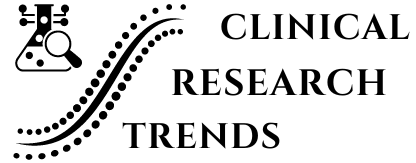Regulatory Updates and Their Impact on Research
In the dynamic landscape of biomedical research, regulatory frameworks play a pivotal role in ensuring the safety, efficacy, and ethical conduct of scientific investigations. As our understanding of diseases and therapeutic modalities evolves, and as new technologies emerge, regulatory agencies must continuously adapt and update their guidelines and policies to keep pace with these advancements. Regulatory updates can have far-reaching implications for researchers, sponsors, and ultimately, patient care.
Regulatory agencies, such as the U.S. Food and Drug Administration (FDA), the European Medicines Agency (EMA), and their counterparts in other countries, are responsible for overseeing and regulating various aspects of biomedical research. These agencies play a critical role in:
Ensuring Patient Safety
Regulatory agencies establish guidelines and standards to protect the safety and well-being of research participants, including requirements for informed consent, risk assessment, and adverse event reporting. By setting rigorous safety standards, these agencies help mitigate potential risks and ensure that the rights and welfare of research participants are safeguarded throughout the research process.
Evaluating Efficacy and Quality
Agencies review and evaluate data from preclinical and clinical studies to assess the efficacy, quality, and potential risks of investigational products, such as drugs, biologics, medical devices, and diagnostic tests. This rigorous evaluation process ensures that only safe and effective products are approved for use in clinical practice, ultimately protecting public health and promoting evidence-based decision-making.
Promoting Ethical Conduct
Regulatory frameworks outline ethical principles and guidelines for the conduct of research, including considerations for vulnerable populations, data privacy, and the responsible use of emerging technologies. By establishing clear ethical standards, regulatory agencies help maintain the integrity of biomedical research and foster public trust in the scientific process.
Facilitating Innovation
While ensuring safety and efficacy, regulatory agencies also strive to foster innovation by providing pathways for the development and approval of novel therapies, diagnostic tools, and research methodologies. This balanced approach encourages scientific progress while maintaining appropriate safeguards and oversight.
Harmonizing Standards
Regulatory agencies collaborate with international counterparts to harmonize standards and guidelines, facilitating the conduct of global research and enabling the efficient exchange of data and products across borders. This harmonization effort promotes consistency, reduces duplication of efforts, and supports the development of therapies that can benefit patients worldwide.
By establishing and enforcing these regulatory frameworks, agencies play a crucial role in protecting public health, promoting scientific integrity, and facilitating the translation of research findings into safe and effective medical products and interventions.
Impact of Regulatory Updates on Biomedical Research
As scientific knowledge and technological capabilities advance, regulatory agencies must continuously review and update their guidelines and policies to ensure they remain relevant and effective. These regulatory updates can have significant implications for various aspects of biomedical research:
Clinical Trial Design and Conduct
Updates to regulations governing clinical trial design, participant selection criteria, data collection, and reporting requirements can necessitate changes in study protocols, potentially impacting timelines, costs, and the overall feasibility of research projects. For example, revisions to informed consent processes, data monitoring requirements, or endpoint definitions may require researchers to modify their study designs and procedures accordingly.
Investigational Product Development
Revisions to guidelines for preclinical testing, manufacturing processes, and quality control measures can influence the development and evaluation of investigational products, such as drugs, biologics, and medical devices. These updates may necessitate changes in product formulation, production methods, or testing protocols, potentially affecting the timeline and cost of product development.
Emerging Technologies and Novel Therapies
As new technologies and therapeutic modalities emerge, such as gene therapies, cell-based therapies, and digital health solutions, regulatory agencies must develop and update guidelines to ensure their safe and effective development and implementation. These updates aim to provide a clear regulatory pathway for novel products while addressing potential risks and ethical considerations associated with these cutting-edge technologies.
Data Privacy and Security
With the increasing use of digital technologies and the collection of sensitive personal and health data, regulatory updates addressing data privacy, security, and informed consent requirements can impact research methodologies and data management practices. Researchers may need to implement enhanced data protection measures, revise consent procedures, and adapt their data handling protocols to comply with these updated regulations.
International Collaboration and Harmonization
Regulatory updates in one jurisdiction can have ripple effects on global research collaborations and the acceptance of data across borders, highlighting the importance of international harmonization efforts. Divergent regulatory requirements across different regions can create challenges for multinational research programs, necessitating careful coordination and alignment with various regulatory frameworks.
Ethical Considerations
As new scientific frontiers are explored, regulatory agencies may need to update guidelines and policies to address emerging ethical concerns, such as the use of gene editing technologies, artificial intelligence, or the involvement of vulnerable populations in research. These updates aim to ensure that biomedical research is conducted in an ethical and socially responsible manner, while also providing guidance on navigating complex ethical dilemmas.
Compliance and Oversight
Regulatory updates often necessitate changes in compliance processes, documentation requirements, and oversight mechanisms, impacting the operational aspects of research programs and the workload of regulatory affairs professionals. Researchers and sponsors may need to revise standard operating procedures, implement new training programs, and adapt their quality management systems to maintain compliance with the updated regulations.
Funding and Resource Allocation
Adapting to regulatory changes may require additional resources, such as personnel, infrastructure, or training, potentially influencing funding priorities and resource allocation decisions for research institutions and sponsors. Organizations may need to reassess their budgets, seek additional funding sources, or reallocate resources to ensure compliance with the updated regulations.
Public Trust and Acceptance
Regulatory updates that address public concerns or enhance transparency can contribute to building trust and acceptance of biomedical research among the general population, fostering a supportive environment for scientific progress. By demonstrating a commitment to safety, ethics, and public accountability, regulatory agencies can help maintain public confidence in the research enterprise.
Competitive Landscape
Regulatory updates can impact the competitive landscape of the biomedical research industry, as some organizations may be better positioned to adapt to new requirements, potentially influencing investment decisions and strategic partnerships. Companies or research institutions that can effectively navigate regulatory changes may gain a competitive advantage, while those that struggle to comply may face challenges in attracting funding or collaborators.
Research Methodology and Study Design
Regulatory updates may necessitate changes in research methodologies and study designs to align with new guidelines or requirements. For example, updates related to statistical analysis methods, data collection techniques, or endpoint definitions could prompt researchers to modify their approaches to ensure compliance and maintain the validity of their findings.
Stakeholder Engagement and Communication
Regulatory updates often require effective communication and engagement with various stakeholders, including research participants, patient advocacy groups, healthcare providers, and industry partners. Ensuring that all stakeholders are informed about the changes and their implications can be crucial for maintaining transparency, fostering collaboration, and facilitating a smooth transition to the updated regulatory framework.
Training and Education
As regulations evolve, there is a need for ongoing training and education programs to ensure that researchers, regulatory professionals, and other stakeholders are equipped with the knowledge and skills necessary to navigate the updated requirements. Comprehensive training initiatives can help mitigate the risk of non-compliance and promote a culture of continuous learning and adaptation within the research community.
Regulatory Interpretation and Guidance
Regulatory updates may be subject to varying interpretations, and researchers and sponsors may require additional guidance from regulatory agencies to ensure proper implementation. Clear and timely communication of regulatory expectations, as well as opportunities for dialogue and clarification, can help facilitate a consistent understanding and application of the updated regulations across the research community.
Transition Periods and Grandfathering Provisions
When introducing significant regulatory changes, agencies may provide transition periods or grandfathering provisions to allow ongoing research projects to be completed under the previous regulatory framework. These measures can help minimize disruptions and ensure continuity in research efforts while allowing time for organizations to adapt to the new requirements.
By understanding the far-reaching implications of regulatory updates and proactively addressing the associated challenges, researchers, sponsors, and regulatory professionals can navigate these changes more effectively, ensuring compliance, maintaining scientific integrity, and ultimately advancing biomedical research for the benefit of patients and society.
Navigating Regulatory Updates: Challenges and Best Practices
While regulatory updates are essential for ensuring the safety, efficacy, and ethical conduct of biomedical research, navigating these changes can present significant challenges for researchers, sponsors, and regulatory professionals. Here are some key challenges and best practices to consider:
Challenges:
- Staying Informed: Keeping abreast of regulatory updates across multiple jurisdictions and agencies can be a daunting task, particularly for research programs operating on a global scale. With regulatory frameworks constantly evolving, it can be challenging to stay up-to-date with the latest changes and their potential implications for ongoing or planned research activities.
- Interpreting and Implementing Changes: Regulatory updates may be subject to varying interpretations, and implementing the necessary changes in research protocols, processes, and infrastructure can be complex and time-consuming. Ambiguities or inconsistencies in the updated regulations can lead to confusion and potential non-compliance if not addressed properly.
- Resource Constraints: Adapting to regulatory changes may require additional resources, such as personnel, training, or infrastructure upgrades, which can strain budgets and operational capacities, particularly for smaller organizations or academic institutions. Limited resources can make it challenging to allocate the necessary funds and personnel to ensure full compliance with the updated regulations.
- Maintaining Compliance: Ensuring ongoing compliance with evolving regulatory requirements can be challenging, as it may involve revising standard operating procedures, documentation, and training programs. Maintaining a robust compliance program requires continuous monitoring, updating, and effective communication across all levels of the organization.
- Stakeholder Engagement: Effectively communicating and engaging with various stakeholders, including research participants, sponsors, and regulatory authorities, during periods of regulatory change can be a significant undertaking. Ensuring that all stakeholders are informed, aligned, and supportive of the necessary changes can be a complex and time-consuming process.
- Balancing Innovation and Regulatory Compliance: While regulatory updates aim to ensure safety and ethical conduct, there is a risk that overly restrictive or inflexible regulations may hinder innovation and scientific progress. Finding the right balance between protecting public health and fostering a supportive environment for research and development can be a delicate equilibrium.
- Global Harmonization Challenges: Despite efforts to harmonize regulatory frameworks across different regions and countries, variations in local regulations and cultural contexts can create challenges for multinational research programs. Navigating these differences and ensuring compliance with multiple regulatory frameworks can be a complex and resource-intensive endeavor.
- Transition and Implementation Timelines: Regulatory updates often come with specific timelines for implementation, which can create pressure on organizations to adapt their processes and infrastructure within a limited timeframe. Failure to meet these deadlines can result in non-compliance and potential penalties or delays in research activities.
- Legacy Data and Ongoing Studies: Regulatory updates may impact the validity or acceptability of data collected under previous regulatory frameworks, potentially affecting ongoing studies or historical datasets. Addressing these issues and ensuring the integrity and usability of existing data can be a significant challenge.
- Workforce Training and Competency Development: Ensuring that research teams, regulatory affairs professionals, and other stakeholders are adequately trained and competent in navigating the updated regulations can be a substantial undertaking. Developing comprehensive training programs and fostering a culture of continuous learning are essential for maintaining compliance and promoting best practices.
Best Practices:
- Proactive Monitoring and Horizon Scanning: Establishing robust mechanisms for monitoring and anticipating regulatory updates can help organizations stay ahead of the curve and prepare for upcoming changes. This may involve dedicated regulatory intelligence teams, subscription to regulatory updates and newsletters, or participation in industry forums and conferences.
- Regulatory Intelligence and Analysis: Investing in regulatory intelligence capabilities, including dedicated personnel or external consultants, can aid in interpreting and analyzing the implications of regulatory updates for specific research programs or therapeutic areas. These experts can provide guidance on compliance strategies, risk mitigation, and implementation plans.
- Collaboration and Knowledge Sharing: Fostering collaboration and knowledge sharing within the research community, industry associations, and regulatory bodies can facilitate the dissemination of best practices and promote harmonized approaches to implementing regulatory changes. Participating in industry forums, consortia, and working groups can facilitate knowledge exchange and collective problem-solving.
- Risk Assessment and Mitigation Strategies: Conducting thorough risk assessments and developing mitigation strategies can help organizations identify potential areas of non-compliance, prioritize actions, and allocate resources effectively. This proactive approach can minimize disruptions and ensure a smooth transition to the updated regulatory framework.
- Training and Capacity Building: Implementing comprehensive training programs and building internal capacity can ensure that research teams, regulatory affairs professionals, and other stakeholders are equipped with the knowledge and skills necessary to adapt to regulatory changes. Continuous professional development, mentoring programs, and cross-functional training can foster a culture of compliance and competency within the organization.
- Stakeholder Engagement and Communication: Establishing clear communication channels and engaging with stakeholders, including research participants, sponsors, and regulatory authorities, can facilitate a smooth transition during periods of regulatory change and foster trust and transparency. Regular updates, town hall meetings, and open dialogue can help address concerns and ensure alignment among all parties involved.
- Continuous Improvement and Quality Management: Adopting a culture of continuous improvement and implementing robust quality management systems can help organizations adapt to regulatory changes more efficiently and maintain compliance over time. Regular audits, process reviews, and corrective action plans can identify areas for improvement and drive ongoing compliance efforts.
Leveraging Technology and Automation: Utilizing technology solutions, such as regulatory intelligence platforms, document management systems, and automated processes, can streamline compliance efforts and enhance the organization's ability to respond to regulatory updates. These tools can facilitate efficient tracking, reporting, and implementation of regulatory changes.
- Regulatory Strategy and Planning: Developing comprehensive regulatory strategies and plans that align with the organization's research objectives and priorities can help navigate regulatory changes more effectively and ensure long-term sustainability. These strategies should consider potential regulatory updates, risk mitigation measures, and resource allocation plans.
Advocacy and Engagement with Regulatory Bodies: Participating in public consultations, industry forums, and engaging with regulatory agencies can provide opportunities to share insights, contribute to the development of guidelines, and advocate for the interests of the research community. This collaborative approach can help shape regulatory policies and ensure that the unique needs and challenges of the research sector are considered.
- Regulatory Compliance Culture: Fostering a strong culture of regulatory compliance within the organization is essential for navigating regulatory updates effectively. This involves promoting a shared understanding of the importance of compliance, encouraging open communication, and establishing clear accountability and responsibility structures.
- Continuous Monitoring and Adaptation: Regulatory frameworks are constantly evolving, and organizations must be prepared to continuously monitor and adapt to new updates and changes. Establishing robust monitoring processes, regular review cycles, and agile implementation strategies can help organizations stay ahead of regulatory developments and maintain compliance over time.
Notable Labs: Navigating Regulatory Updates and Their Impact on Research
Notable Labs consistently adapts to regulatory updates to maintain the highest standards of compliance and innovation in biomedical research. By closely monitoring changes from regulatory agencies such as the FDA and EMA, Notable Labs ensures that their research protocols and practices align with the latest guidelines and requirements. This proactive approach allows them to swiftly integrate new regulations into their processes, minimizing disruptions and maintaining the integrity of their research.
A significant aspect of Notable Labs' strategy involves robust communication and collaboration with regulatory bodies. By engaging in regular dialogue and participating in industry forums, Notable Labs stays informed about upcoming regulatory changes and contributes to the development of new guidelines. This collaborative approach not only helps Notable Labs remain compliant but also supports the broader scientific community by advocating for practical and effective regulatory frameworks that foster innovation while ensuring patient safety and ethical research conduct. Through these efforts, Notable Labs exemplifies how organizations can effectively navigate the evolving regulatory landscape to advance medical research and improve patient outcomes.
Conclusion
In the dynamic landscape of biomedical research, regulatory frameworks play a crucial role in safeguarding patient safety, ensuring efficacy, and promoting ethical conduct. As scientific knowledge and technologies evolve, regulatory agencies must continually update guidelines and policies to stay relevant and effective. These updates can significantly impact various aspects of biomedical research, from clinical trial design and investigational product development to data privacy and international collaboration.
Regulatory updates present challenges and opportunities for researchers, sponsors, and regulatory professionals. By adopting proactive monitoring, robust training programs, and effective stakeholder communication, organizations can navigate these changes successfully. The experiences of Notable Labs highlight the importance of staying informed and engaging with regulatory bodies to adapt seamlessly to new regulations. Ultimately, by addressing these regulatory challenges, the biomedical research community can ensure compliance, maintain scientific integrity, and advance research that benefits patients and society.
By proactively addressing these challenges and implementing best practices, researchers, sponsors, and regulatory professionals can navigate regulatory updates more effectively, ensuring compliance, maintaining scientific integrity, and ultimately advancing biomedical research for the benefit of patients and society.










